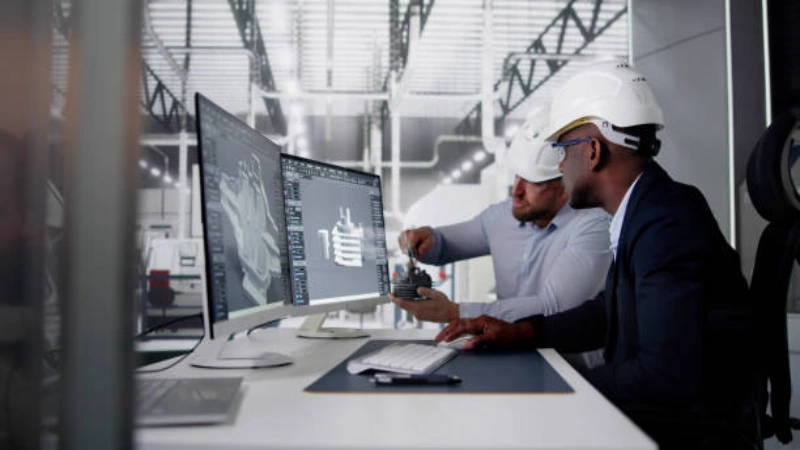

Many professionals overlook that affordable CAD software can often meet the needs of projects requiring only basic design features. If you’re working on simple 2D or 3D models, the right budget-friendly tool can enhance productivity without the frills of complex systems. However, understanding when to choose these options involves evaluating various factors, including your project’s complexity and team dynamics. So, how do you determine if it’s the right fit for your specific needs?
When you’re initiating a new design project, evaluating project complexity is essential for determining the right CAD software to use. You’ll need to assess the intricacies of your project, including the number of components, level of detail, and required precision. For simpler designs, affordable CAD software often suffices, providing essential tools without overwhelming features.
However, if your project demands advanced simulations or intricate detailing, you may need to explore more robust options. Analyze how these complexities align with the capabilities of various CAD software solutions, focusing on user interface, rendering power, and file compatibility. By understanding your project’s demands, you can effectively select affordable CAD software that meets your needs without sacrificing quality or efficiency.

How do you determine the right CAD software for your team? First, assess your team size and collaboration needs. If you’re working in a large team, opt for cheap CAD software that supports multiple users and real-time collaboration features. This guarantees everyone stays connected and can contribute effectively, minimizing miscommunication. For smaller teams, simpler solutions might suffice, but consider future growth; you don’t want to outgrow your software too quickly.
Evaluate how your team shares files and communicates within the software. Look for compatibility with existing tools, as seamless integration can greatly enhance workflow efficiency. By aligning your software choice with your team dynamics, you’re setting the foundation for successful project execution without overspending.
Understanding your team’s size and collaboration needs lays the groundwork for selecting the right CAD software, but pinpointing the specific features and capabilities that matter most is where the real decision-making happens. You should evaluate essential functionalities like 2D/3D modeling, compatibility with various file formats, and collaboration tools that streamline workflows. Look for user-friendly interfaces and robust support documentation.
If you’re considering the best cheap CAD software, ensure it offers sufficient customization options and integration with other tools your team uses. Don’t overlook performance aspects, such as rendering speed and stability. Prioritize features that enhance productivity and efficiency, aligning them with your project goals to make an informed choice that meets your team’s specific needs.

While weighing options for affordable CAD software, it’s essential to contemplate not just the initial cost but also the long-term value it brings to your projects. Opting for the cheapest Computer-Aided Design software might save you money upfront, but you should consider factors like usability, customer support, and software updates. A low-cost tool may lack significant features, leading to inefficiencies and potential rework down the line.
Evaluate how the software integrates with your existing systems and its scalability for future projects. Investing in a more robust solution could yield savings by enhancing productivity and reducing project timelines. Ultimately, balancing immediate budget constraints with the software’s long-term benefits is vital to making an informed decision that supports your project’s success.
Whether you’re an architect, engineer, or product designer, the tools you use can make or break your creative process. This is where CAD (Computer-Aided Design) software steps in as a true game-changer. It has revolutionized the way professionals design, visualize, and bring ideas to life.
If you’ve ever wondered why CAD software is so widely used across industries, let’s explore the biggest benefits it offers.
Gone are the days of hand-drawn sketches filled with tiny errors. CAD software allows you to design with pinpoint accuracy, ensuring measurements, calculations, and proportions are flawless. This level of detail means fewer mistakes during manufacturing or construction, saving time and money.
Speed matters, especially in competitive industries. CAD software comes with smart tools like copy, rotate, mirror, and component libraries that allow designers to work much faster compared to traditional drafting. A design that might have taken weeks on paper can now be completed in days—or even hours.
One of the biggest perks of CAD is the ability to create realistic 3D models. Designers can rotate, zoom, and examine their creations from every angle before production begins. This makes it easier to spot potential issues and helps clients clearly understand what the final product will look like.
Every designer knows the frustration of having to redo an entire drawing just to make a small change. With CAD, edits are quick and hassle-free. Whether it’s changing dimensions or swapping out materials, updates can be made instantly without starting from scratch.
In modern projects, teamwork is everything. CAD software allows multiple team members to work on the same design, share files digitally, and provide feedback in real-time. This makes collaboration smoother—whether your colleagues are across the office or halfway around the world.
Mistakes are expensive, but CAD helps minimize them. By simulating designs before production, it’s easier to catch flaws early. This not only reduces material waste but also prevents costly errors during manufacturing or construction.
Good design isn’t just about visuals—it’s also about proper documentation. CAD software automatically generates bills of materials (BOMs), dimensions, part lists, and annotations. This keeps everything organized, standardized, and professional.
Some advanced CAD programs let you simulate real-world conditions like stress, heat, or motion. This means you can test your design virtually before investing in prototypes. The result? Better products with fewer surprises.
In the domain of CAD software, choosing affordable options can be a wise investment when simplicity reigns. Just like a sturdy bridge built on solid foundations, these tools can support your basic design needs without the weight of unnecessary features. By evaluating your project’s complexity, team dynamics, and budget constraints, you guarantee that your creative vision isn’t stifled by cost. Embracing budget-friendly software can empower your team to thrive, turning ideas into tangible realities efficiently.